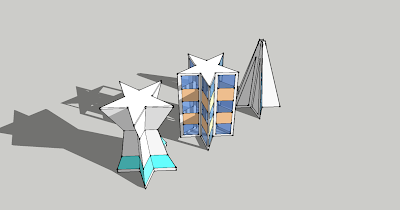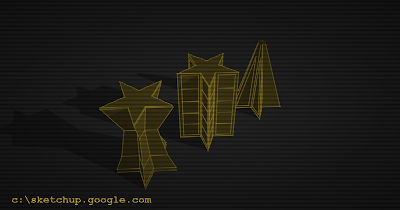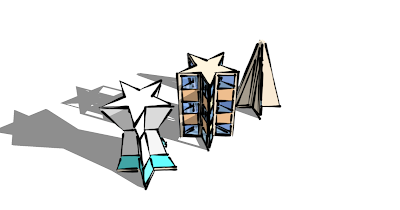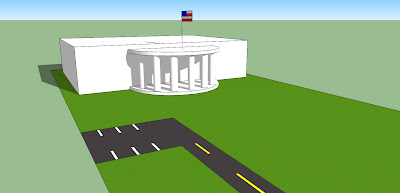Wednesday, October 27, 2010
Learning Computer Programming: Countdowns, Hits, and Sound!
Today you will learn how to create more scripts that will help you create your own video game. If you are finished with the Clock Project and Ball Game, then move on to the Dog and Cat Game worksheet, which you can get from Ms. Hernandez.
Wednesday, October 20, 2010
Learning Computer Programming: Backgrounds, Sprites , Interactivity
Today, you will learn how to manipulate the backgrounds and "sprites" in Scratch. After listening to Ms. Hernandez's instructions, read how to do the Clock project.
The first step to completing the Clock is to download an image of a clock. Ms. Hernandez will show you how to find this image on your computer and import it into Scratch.
Once you are finished with the Clock, then you can move on to the Ball Game where you will learn how to make your sprites interact. Learning how sprites interact is the first step in learning how to create games!
The first step to completing the Clock is to download an image of a clock. Ms. Hernandez will show you how to find this image on your computer and import it into Scratch.
Once you are finished with the Clock, then you can move on to the Ball Game where you will learn how to make your sprites interact. Learning how sprites interact is the first step in learning how to create games!
Wednesday, October 13, 2010
Learning Computer Programming: Scratch Basics
Today we will be exploring basic computer programming with a language called Scratch.
Take a look at this to help you understand what is computer programming and Scrach.
http://www.teachnet-uk.org.uk/2007%20Projects/ICT-Scratch/Scratch/index.html
Some of you are familiar with Scratch, but for many of you this is all brand new. For those of you who are familiar with Scratch, help your classmates out by listening to the presentation or helping Ms. Hernandez explain things if she asks. As you listen to the presentations on how to get through Scratch, take notice of the terms you will learn today:
program (an organized list of instructions that causes the computer/[for this class, a Sprite] to do something)
script (a simple movement program)
Forever
Costume
Sprite
What are the definitions of Forever, Costume, and Sprite in Scratch? Put your answer in the comments below.
After listening to the presentation, you will explore creating a script so that the Scratch Cat will move. This is just beginning of your exploration of the possibilities with Scratch!
Take a look at this to help you understand what is computer programming and Scrach.
http://www.teachnet-uk.org.uk/2007%20Projects/ICT-Scratch/Scratch/index.html
Some of you are familiar with Scratch, but for many of you this is all brand new. For those of you who are familiar with Scratch, help your classmates out by listening to the presentation or helping Ms. Hernandez explain things if she asks. As you listen to the presentations on how to get through Scratch, take notice of the terms you will learn today:
program (an organized list of instructions that causes the computer/[for this class, a Sprite] to do something)
script (a simple movement program)
Forever
Costume
Sprite
What are the definitions of Forever, Costume, and Sprite in Scratch? Put your answer in the comments below.
After listening to the presentation, you will explore creating a script so that the Scratch Cat will move. This is just beginning of your exploration of the possibilities with Scratch!
Tuesday, October 5, 2010
3-D Modeling with Google SketchUp: Finishing Touches and Dream Architecture
Today you are going to put the finishing touches on your project, save your project as a 2D image and share it with me. After collecting everyone’s Google SketchUp pictures, Ms. Hernandez will put them in a slideshow and share it with the class next week.
Add these finishing touches to your final project:
We put SHADOWS into our Google SketchUp model in order to make our model look more realistic. It also looks very cool! Another reason why we put SHADOWS is to see how the sun shines on what we have designed. If we were going to actually build our designs in real-life, we need to know what sort of shadows our building casts. This would help us with, for example, our placement of a pool in our backyard. Using SHADOWS helps us see the sunny and shady parts of our backyard.
To add SHADOWS to your SketchUp model, follow these instructions:

If you would like to highlight the complexity, beauty or coolness of the design of your building, STYLES is a fun way draw attention to your design. Make sure you choose a style that focuses on your design and not on the unique style. Meaning, I want people to say, “Hey, that building looking really cool!” instead of “Hey, the style of that building looks so cool!” Take a look at the following pictures to see what I mean.

 Which one makes you look at my building? Which one makes you get lost in its style? Keep this in mind when you are styling your models.
Which one makes you look at my building? Which one makes you get lost in its style? Keep this in mind when you are styling your models.
To apply STYLES to your Sketchup model, follow these instructions:
1. Click on Windows in the top menu and select Styles. This will open the Styles box.
2. Click on the Select tab to make sure that what you choose will be applied to your model.
3. Choose a styles collection from the Styles Collection drop-down list. Click on the upside-down triangle to see all the different styles: Assorted Styles, Sketchy Edges, Straight Lines, etc.
4. Choose a style in the Styles window to apply it to your model.
TA DA! Now your building’s stylin’.
Once you are satisfied with your final project, you need to save it as a 2D image. First , use Orbit or Pan to choose how your model will look in your picture.
Once you are ready to take a picture, follow these steps:
1. Go to File --> Export. Click on 2D Graphic…
2. Type in your first and last name as the File Name.
3. Choose the Export Type as JPEG Image.
4. Choose the correct folder to place this file.
5. Click on Export.
If you have an email address and know how to attach files, send the picture of your Google SketchUp model to ms.hernandez01@gmail.com.
If you are finished with all these tasks by the end of class, take a Round Tower or Factory handout from Ms. Hernandez and work on this project on SketchUp until the period ends.
Add these finishing touches to your final project:
SHADOWS and STYLES
We put SHADOWS into our Google SketchUp model in order to make our model look more realistic. It also looks very cool! Another reason why we put SHADOWS is to see how the sun shines on what we have designed. If we were going to actually build our designs in real-life, we need to know what sort of shadows our building casts. This would help us with, for example, our placement of a pool in our backyard. Using SHADOWS helps us see the sunny and shady parts of our backyard.
To add SHADOWS to your SketchUp model, follow these instructions:
- Click on Windows in the top menu and select Shadows. This will display the Shadow Settings box.
- At the top of the box, click on the Display Shadows check box.
- Move the Time Sliders back and forth to choose the Date and/or Time when the sun the shines and watch the shadows change! Choose a Date or Time.

TA DA! You now have SHADOWS in your model.
If you would like to highlight the complexity, beauty or coolness of the design of your building, STYLES is a fun way draw attention to your design. Make sure you choose a style that focuses on your design and not on the unique style. Meaning, I want people to say, “Hey, that building looking really cool!” instead of “Hey, the style of that building looks so cool!” Take a look at the following pictures to see what I mean.

 Which one makes you look at my building? Which one makes you get lost in its style? Keep this in mind when you are styling your models.
Which one makes you look at my building? Which one makes you get lost in its style? Keep this in mind when you are styling your models.To apply STYLES to your Sketchup model, follow these instructions:
1. Click on Windows in the top menu and select Styles. This will open the Styles box.
2. Click on the Select tab to make sure that what you choose will be applied to your model.
3. Choose a styles collection from the Styles Collection drop-down list. Click on the upside-down triangle to see all the different styles: Assorted Styles, Sketchy Edges, Straight Lines, etc.
4. Choose a style in the Styles window to apply it to your model.
TA DA! Now your building’s stylin’.
Once you are satisfied with your final project, you need to save it as a 2D image. First , use Orbit or Pan to choose how your model will look in your picture.
Once you are ready to take a picture, follow these steps:
1. Go to File --> Export. Click on 2D Graphic…
2. Type in your first and last name as the File Name.
3. Choose the Export Type as JPEG Image.
4. Choose the correct folder to place this file.
5. Click on Export.
If you have an email address and know how to attach files, send the picture of your Google SketchUp model to ms.hernandez01@gmail.com.
If you are finished with all these tasks by the end of class, take a Round Tower or Factory handout from Ms. Hernandez and work on this project on SketchUp until the period ends.
Subscribe to:
Comments (Atom)

